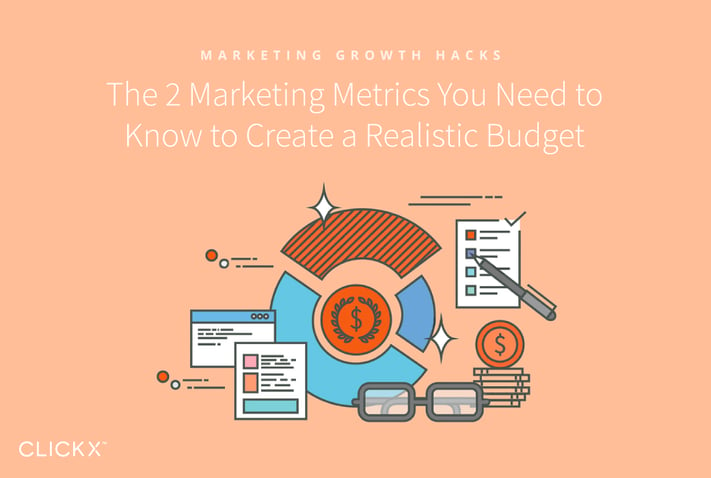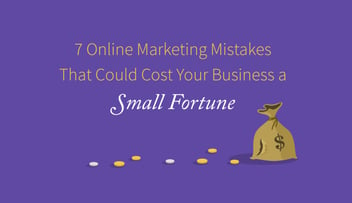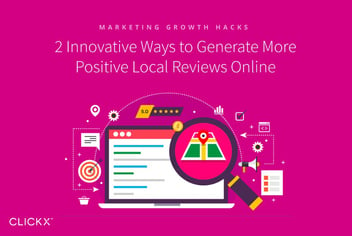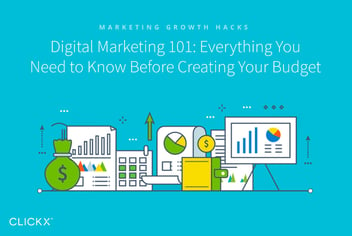The 2 Marketing Metrics for Create a Realistic Budget

When creating your marketing budget, it can feel impossible to know exactly how much you should spend. With so many different factors to consider, it’s easy to make mistakes and overspend, or simply not put in enough investment. This can lead to low profit margins, or a less-than-successful promotion of your products and services.
Fortunately, tracking certain marketing metrics can make it far easier for you to create a realistic marketing budget. When you know your cost per lead, the number of leads who convert into customers, and the cost of the products being purchased, you can better understand how to set your budget to ensure that you see high profit margins.
Let’s take a look at how you can apply these key metrics to create a more realistic budget!
Key Takeaways:
- Knowing your cost per lead enables you to identify how much you’re spending to acquire each new potential client or customer.
- Your lead to customer conversion rate tells you how many of your leads are actually making a purchase.
- Product costs help you determine how much profit you need to make, helping you adjust your marketing budget to account for the margin you require.
1. Cost Per Lead
Your cost per lead is the amount you’re spending to acquire each lead. This is one of the most important metrics you need to understand when setting your marketing budget. Your cost per lead enables you to see how much you’re spending relative to the number of new customers you’re bringing in, helping you determine whether your campaigns are cost-effective.
Finding your cost per lead involves a simple equation. You’ll want to divide the total cost of your campaign by the number of new leads you’ve acquired. However, you need to be sure you’re including all potential costs associated with that campaign. That includes the investment required to develop campaign materials, as well as to implement and promote the campaign.

In most cases, you want your cost per lead result to be as low as possible. After all, that will mean you’re not spending a lot of money to acquire new leads, and you’re attracting enough new interest to be worth the initial investment. However, the average cost per lead can vary based on your industry and channel.
Once you’ve identified the cost per lead you’d like to aim for, you can use that number to determine how much money you need to invest in a new marketing campaign. By considering the number of new leads you want to attract, you can estimate about how much money you’d like to spend. If your cost per lead seems too high, you can look for new strategies or campaigns that might deliver a more cost-effective impact.
2. Lead to Customer Conversion
While knowing your cost per lead is important, you need to remember that not all of your leads will convert into customers. Even if you have a low cost per lead, you may not be making enough money for your marketing budget to be sustainable. In order to better understand how much you should invest in your marketing campaigns, you need to understand how many of your leads are eventually making a purchase.
Your lead to customer conversion rate tells you what percentage of leads eventually become customers or clients. This metric helps you better understand exactly how many of your leads are worthwhile, and how much of your investment is actually turning into profit for your business. To find your lead to customer conversion, you’ll want to divide the number of sales you have by the number of leads you’ve collected. You can then turn this number into a percentage, by multiplying it by 100.

For example, if you’ve attracted 20 new customers from 100 leads, you would have a conversion rate of 20%. While this conversion rate may seem low, average conversion rates are typically in the single digits. However, you of course want to keep your own conversion rate as high as possible. A high rate indicates that you are attracting the right leads and efficiently turning them into customers.
Understanding your conversion rate also enables you to budget more efficiently, because you know how many leads you need to attract in order to land a sale. If you know you need to get 20 new leads to land one sale, you can use this fact paired with your cost per lead to find out how many leads you need to meet your sales goals.
Bonus: Product Costs
The final metric you’ll want to identify is your product costs. Understanding the complete costs of your products enables you to see how much you’re actually spending to generate inventory. Your product costs also give you a baseline that will help you determine your profit margins, letting you know how much you need to sell if you really want to make a profit.
[Tweet “Your product costs tell you how much you need to sell if you really want to make a profit.”]
Knowing your bottom line helps you identify whether or not your business is profitable. You will need to generate your products’ costs by taking a look at how much you’re spending to acquire, assemble, and generate each item. If you offer a service instead, you can find your service costs by calculating the cost of labor and overhead.

After you know exactly how much each product or service is costing you, you’ll want to use this number to determine your profit per sale. This compares the amount you’re selling a product or service for to the cost you spend to develop and promote that offering. This is important for creating your marketing budget, because you need to consider your profit margins when determining how much you can spend on promotion.
This final metric will ultimately tell you whether or not you’re making money from your marketing campaigns. If your product costs are too high and your profit margins are too low, you will need to take a hard look at whether your marketing budget is being used as efficiently as possible. The cost of your products or services can also help you determine how aggressively you need to market your offerings, based on the number of items you need to sell to turn a profit.
Conclusion
To create a realistic marketing budget, you need to understand how much you’re spending to attract each new lead, how many of those leads are converting into customers, and how much it costs to create your products or services. When you clearly understand your profit margins, you can create a more successful marketing budget that will help your business really take off.
Let’s recap the three marketing metrics you need to measure that will help you create your budget:
- Cost per lead, to determine how much you’re spending for each new lead you acquire.
- Lead to customer conversion, to find out how many leads are making a purchase.
- Product costs and profit per sale, to know whether or not you’re making money.
How do you think these metrics will help you create a better marketing budget? Let me know in the comments section below!



